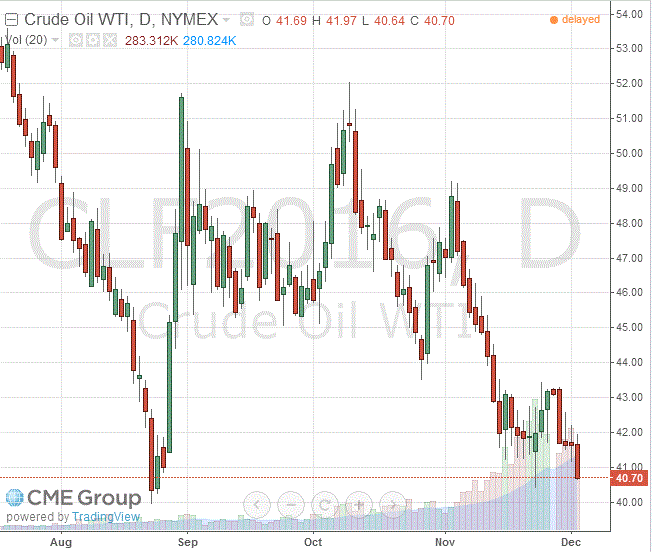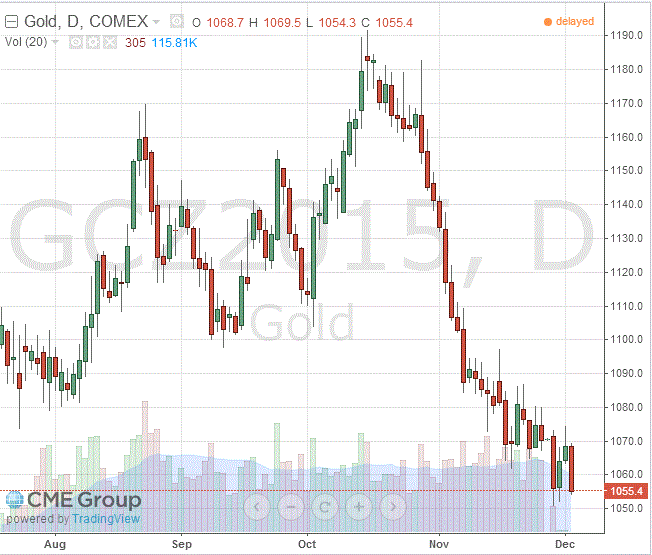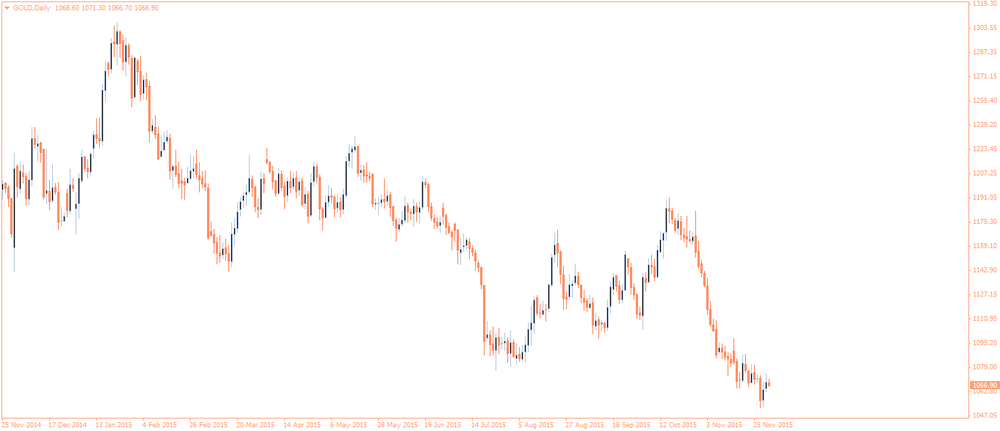Noticias del mercado
-
17:49
Oil prices fall on the U.S. crude oil inventories data
Oil prices traded lower on the U.S. crude oil inventories data. The U.S. Energy Information Administration (EIA) released its crude oil inventories data on Wednesday. U.S. crude inventories increased by 1.18 million barrels to 489.4 million in the week to November 27. It was the tenth consecutive increase.
Analysts had expected U.S. crude oil inventories to decline by 1.25 million barrels.
Gasoline inventories increased by 135,000 barrels, according to the EIA.
Crude stocks at the Cushing, Oklahoma, climbed by 428,000 million barrels.
U.S. crude oil imports increased by 414,000 barrels per day.
Refineries in the U.S. were running at 94.5% of capacity, up from 92.0% the previous week.
Market participants are awaiting the release of the results of the OPEC meeting. The OPEC will meet in Vienna on December 04 to decide on the oil output limit. Analysts expect the OPEC to keep its output limit unchanged.
WTI crude oil for January delivery declined to $40.70 a barrel on the New York Mercantile Exchange.
Brent crude oil for January fell to $43.30 a barrel on ICE Futures Europe.
-
17:29
Gold price falls more than 1%
Gold price dropped more than 1% on a stronger U.S. dollar. The greenback rose against other currencies after the release of the ADP Employment Report. Private sector in the U.S. added 217,000 jobs in November, according the ADP report on Wednesday. October's figure was revised up to 196,000 jobs from a previous reading of 182,000 jobs. Analysts expected the private sector to add 190,000 jobs.
Official labour market data will be released on Friday. Analysts expect that U.S. unemployment rate is expected to remain unchanged at 5.1% in November. The U.S. economy is expected to add 200,000 jobs in November, after adding 271,000 jobs in October.
December futures for gold on the COMEX currently traded at 1055.40 dollars per ounce.
-
16:47
U.S. crude inventories climb by 1.18 million barrels to 489.4 million in the week to November 27
The U.S. Energy Information Administration (EIA) released its crude oil inventories data on Wednesday. U.S. crude inventories increased by 1.18 million barrels to 489.4 million in the week to November 27. It was the tenth consecutive increase.
Analysts had expected U.S. crude oil inventories to decline by 1.25 million barrels.
Gasoline inventories increased by 135,000 barrels, according to the EIA.
Crude stocks at the Cushing, Oklahoma, climbed by 428,000 million barrels.
U.S. crude oil imports increased by 414,000 barrels per day.
Refineries in the U.S. were running at 94.5% of capacity, up from 92.0% the previous week.
-
14:23
U.S. ADP Employment Report: private sector adds 217,000 jobs in November
Private sector in the U.S. added 217,000 jobs in November, according the ADP report on Wednesday. October's figure was revised up to 196,000 jobs from a previous reading of 182,000 jobs.
Analysts expected the private sector to add 190,000 jobs.
Services sector added 204,000 jobs in November, while goods-producing sector added only 13,000.
"Job growth remains strong and steady. The current pace of job creation is twice that needed to absorb growth in the working age population. The economy is fast approaching full employment and will be there no later than next summer," the Chief Economist of Moody's Analytics Mark Zandi said.
Official labour market data will be released on Friday. Analysts expect that U.S. unemployment rate is expected to remain unchanged at 5.1% in November. The U.S. economy is expected to add 200,000 jobs in November, after adding 271,000 jobs in October.
-
10:39
Reuters survey: OPEC’s oil production rises in November
According to a Reuters survey, the Organization of the Petroleum Exporting Countries' (OPEC) oil production rose in November due to higher output from Iraq. OPEC's oil output increased to 31.77 million barrels per day (bpd) from 31.64 million in October.
Saudi Arabia produced 10.25 million bpd in November.
Oil output fell in Angola, Libya and Nigeria, while oil output from Iran remained unchanged.
OPEC increased its oil production by about 1.50 million bpd since November 2014.
-
08:03
Oil prices declined
West Texas Intermediate futures for January delivery declined to $41.57 (-0.67%), while Brent crude slid to $44.25 (-0.43%) ahead of official data on U.S. crude stockpiles from the Energy Information Administration. Market participants are also waiting for OPEC meeting scheduled for December 4. Analysts widely expect the group, led by Saudi Arabia, to maintain output despite falling prices. The cartel is likely to defend its market share against competitors.
Meanwhile sources reported that Iranian Oil Minister Bijan Namdar Zanganeh sent a letter to OPEC calling on the cartel to reduce its current production of 31.3 million barrels per day to match its target of 30 million bpd.
-
07:41
Gold traded slightly higher
Gold is currently at $1,067.30 (+0.36%) still supported by short covering, however its outlook remains bearish as investors are preparing for the key U.S. jobs report due on Friday and a Federal Open Market Committee meeting later in December. Strong employment data would raise the probability of a rate hike and decrease demand for the non-interest-paying precious metal.
The dollar weakened slightly after disappointing manufacturing data; however bullion outlook is still driven by expectations of an imminent rate hike in the U.S.
-
00:33
Commodities. Daily history for Dec 1’2015:
(raw materials / closing price /% change)
Oil 41.65 -0.48%
Gold 1,068.30 +0.45%
-


